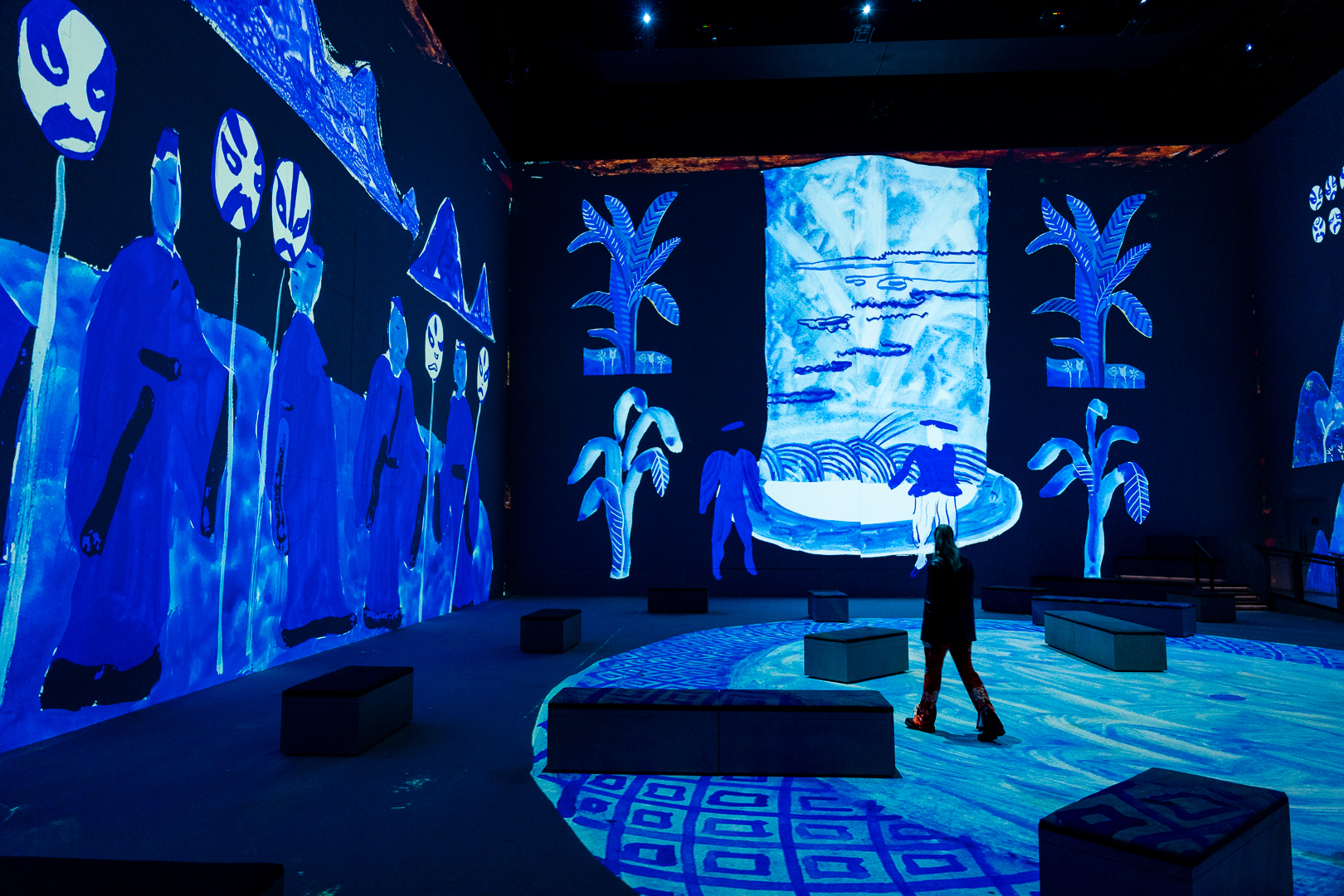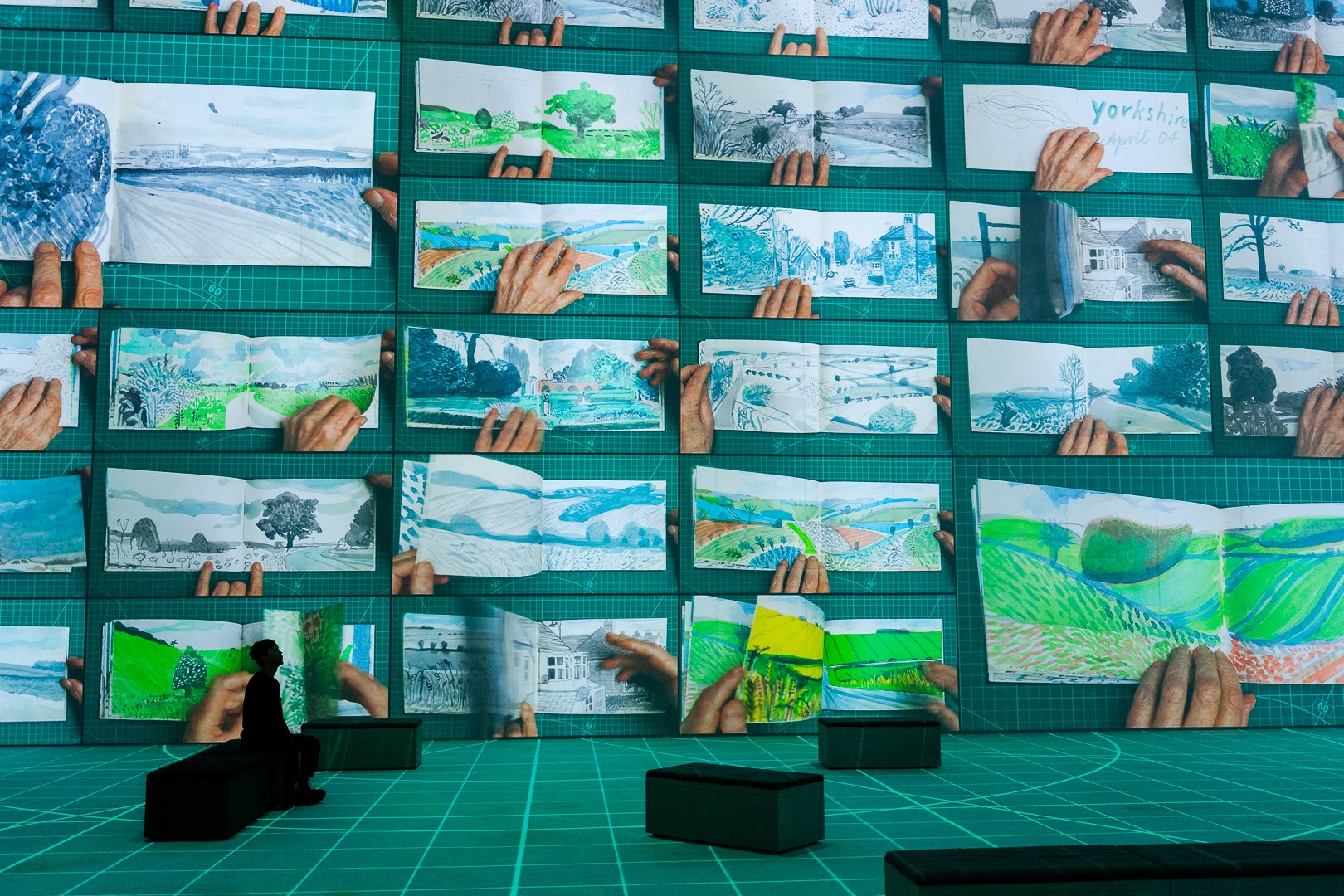
From next-generation exhibitions to brand activations like Netflix House, immersive experiences are increasingly impressing audiences with incredible real-time visuals, LEDs that cover entire rooms, immersive audio effects and more.
But, as we’ve already seen with films, games or TV shows, groundbreaking technology alone isn’t enough to make entertainment memorable. You also need to tell a story compelling enough to get your message across – ideally for generations to come.
We spoke to four experts in the field to get their storytelling tips for immersive experiences. Below, the pros from Moment Factory, Luke Halls Studio, Notch and Disguise share their advice for artists interested in telling impactful stories through immersive experiences now or in the future.
01. Prototype at 10% to deliver at 100%
Before creating an immersive experience, it’s best to outline your idea in its entirety first. “Start on paper, and then take it into your software, where you start with basic shapes and simple effects,” says Notch COO Luke Malcolm, who's spent the past three decades building interactive installations, experiences and teams, working with all kinds of brands, bands and venues.
“Test whether your pacing works, if transitions feel natural, and if the emotional arc lands,” he adds. “Only after confirming the core elements are working in the space should you start fleshing it out. This isn't about cutting corners – it's about quickly learning which ideas don't work. The last thing you want is to have invested weeks creating beautiful content that ultimately gets cut, or doesn't work for your space.”

02. Master the digital-physical feedback loop
For Moment Factory’s Senior Director of Creation, Catherine Turp, it’s important to design an immersive experience for connection, rather than just narration.
Shes leads the design of environments and experiences that fuse creativity, technology, design, and emotion to connect people, from public installations to interactive exhibits and live performances.
Daily design news, reviews, how-tos and more, as picked by the editors.
“Traditional storytelling often relies on character arcs or dialogue,” she explains, “but immersive storytelling lives in the body, the senses, and the collective presence of an audience. To be effective, your story should spark emotions and create a shared sense of wonder, a kind of digital campfire that brings people together in the real world.”
Malcolm agrees, explaining that the key to telling a great story through immersive experiences is to master the feedback loop between the digital and physical worlds. “The most memorable moments for the audience happen when they realise they're part of the story.”
“The key is to map your digital content to physical triggers that drive the spawning or intensity of your immersive media elements,” he adds. “To do this, you need to find the types of interactions that are both simple enough that a child can play with them, but deep enough for adults to do something interesting too.
“For example, when someone's movement creates ripples in a digital pond without them initially realising it, that moment of discovery transforms passive viewers into active participants.”

03. Keep your narrative clear
When an audience steps into an immersive environment, they should instantly feel the essence of the story without needing lengthy explanation. That means defining the emotional arc first, then shaping visuals, sound, and pacing around it.
London-based video designer Luke Halls, Founder of Luke Halls Studio, has designed visuals for Rolling Stones, Elton John, the Olympic 2012 closing ceremony and Paris Fashion Week. He's also been recognised by Drama Desk and BAFTA for his work spanning concerts, opera, theatre shows, film and public art, including
“I always look at how the audience will experience the journey spatially and emotionally,” he says. “Don’t just focus on what they’ll see, but how they’ll move through it, how the atmosphere shifts, and what emotional beats land at each stage. Storytelling in this medium isn’t about overloading people with effects; it’s about immersing them in a cohesive world where every element reinforces the central idea.”

04. Remember that sometimes, bigger is better
While you should never overload people with effects, immersive storytelling is all about impact, and scale can play a huge role in how that impact lands. “Take projects like the Sphere in Las Vegas,” says Arturas B. Candido, Notch Designer for Disguise Services.
“It’s not just big for the sake of it – the size of the canvas itself enables experiences that simply weren’t possible before. That’s why, when you design for immersive experiences, you should always keep the size of your canvas in mind.”
Candido has worked on creative projects for brands and live events and venues including MGM, F1 and the Intuit Dome, helping to shape the future of live and immersive entertainment. He says that as technology evolves, it gives creators the freedom to scale up both creatively and technically. “When you’re not bound by previous limitations, you can build something that feels truly unique and unforgettable,” he says.
This is especially important if you’d like to future-proof your skills as a creative. “As infrastructure continues to accelerate, the canvas for immersive storytelling will literally expand,” explains Turp.
“Already, we’re seeing increased demand for super surfaces with complex multi-surface layouts, 16K to 32K resolutions, and pixel densities that push content to breathtaking scales.”
As technology evolves, creatives who are ready to scale up both technically and creatively won’t be bound by previous limitations, helping you build something that feels truly unique and unforgettable.

05 Build your visuals in layers, not moments
The most compelling immersive experiences have a natural feel to how they are discovered. “Start with ambient base layers — for example, subtle particle drifts, slow colour changes, shifting geometry — then add reactive middle layers that respond to things like movement or sound,” says Malcolm.
“Finally, add your hero moments that punctuate the narrative. This approach will make it easier to come up with ideas, and has the benefit of mirroring how our eyes process real environments: background, midground, foreground.
“When tech rehearsals inevitably bring surprises, like the LED being brighter than expected or colours being off, you now have the advantage of being able to adjust individual layers without needing to rebuild your entire scene.”
06. Have as little latency as possible
When it comes to immersive experiences, first impressions go a long way. That’s why it’s crucial to aim for a system with as little latency as possible — it can make or break the immersive feeling. Technologies like Disguise’s GX3+ media server and Notch can help do this by offering faster and more powerful rendering capabilities.
“Notch has also been a real game-changer because it allows me to iterate in real-time,” says Halls. “In immersive projects, the ability to see how visuals feel in the space immediately, rather than waiting on long renders, means we can be more experimental and responsive.
“I often lean on Notch’s particle systems, procedural effects, and live integration with lighting and stage systems. That responsiveness makes it easier to align the story with the scale of the venue and the mood we want to create.”
“Working across platforms like Unreal, TouchDesigner, Disguise, and Notch, we can prototype quickly, explore bold ideas, and adapt as concepts evolve,” adds Turp. “This ecosystem allows us to connect video, lighting, sound, and audience interaction in a fluid, responsive way, letting us refine details on the fly and push technology in new directions.”

07. Seek inspiration far outside your own medium
One of the best ways to break new creative ground is to look beyond your usual sources of inspiration. “Immersive experiences don’t exist in a vacuum; they’re influenced by everything from architecture to performance art, video games, television, and even science and nature,” explains Candido.
“Great ideas often emerge when you blend insights from multiple disciplines. Staying curious and open to outside influences can unlock concepts you’d never arrive at from inside your own bubble.”
08. Don’t forget your team
Creating large-scale immersive experiences isn’t a solo act. It’s a collaborative process that brings together designers, technologists, producers, engineers, and many others. Everyone plays a key role in bringing the vision to life.
“That’s why it’s important to build up your teamworking and communication skills, both of which are crucial to telling a story successfully in this industry,” Candido explains. “Always try to foster a shared understanding with your team, and anticipate any challenges or roadblocks that may come up together.”
It may seem obvious, but it’s also important to have regular update meetings with your team and post-mortem meetings where you focus on learning from any previous projects.

09. Be prepared for AI-driven personalisation
Experts believe that the boundary between live performance, cinematic storytelling, and interactive worlds will blur further, creating experiences that feel less like attending a show and more like stepping into a living narrative.
“With more capable systems, we’ll be able to create environments that adapt to audiences in real time, whether that’s through data, sensors, or AI-driven content generation,” says Halls. “That means you need to shift your thinking from a one-size-fits-all spectacle to a more personalised experience that can respond more intelligently to audiences.”
“We could also go further and imagine experiences that are multiplayer and multi-layered,” adds Turp. “With computer vision and crowd-sensing, even a simple RGB camera could soon track large audiences, giving environments the ability to respond to both an individual presence and collective dynamics.”
10. Push boundaries, even if there’s risk involved
Last but not least, don’t be afraid to experiment when you create stories for immersive experiences. Immersive storytelling often lives at the intersection of multiple disciplines and technologies, and that can mean trying things no one’s done before.
“Whether it’s combining different real-time tools like TouchDesigner and Notch, or syncing content across massive canvases using RenderStream, stepping into uncharted territory can be intimidating,” explains Candido.
“But those moments of risk are often where the most groundbreaking work happens. Embrace experimentation, especially when it means crafting an experience that’s never existed before.”

Joe is a regular freelance journalist and editor at Creative Bloq. He writes news, features and buying guides and keeps track of the best equipment and software for creatives, from video editing programs to monitors and accessories. A veteran news writer and photographer, he now works as a project manager at the London and Buenos Aires-based design, production and branding agency Hermana Creatives. There he manages a team of designers, photographers and video editors who specialise in producing visual content and design assets for the hospitality sector. He also dances Argentine tango.
You must confirm your public display name before commenting
Please logout and then login again, you will then be prompted to enter your display name.
